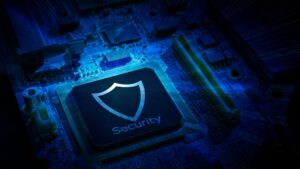 In today’s digital age, the threat of cyber attacks looms larger than ever, making hack attack maintenance a critical concern for businesses and individuals alike. As hackers grow more sophisticated, understanding the nuances of cybersecurity strategies becomes paramount. This article delves into the essentials of maintaining security post-hack, ensuring readers are well-equipped to safeguard their digital assets. From recognizing the signs of a breach to implementing robust security protocols, the journey to recovery and defense can be intricate. Effective hack attack maintenance not only restores systems but fortifies them against future threats, blending reactive measures with proactive enhancements. Stay tuned as we explore the good practices that help maintain security integrity in an ever-evolving cyber landscape.
In today’s digital age, the threat of cyber attacks looms larger than ever, making hack attack maintenance a critical concern for businesses and individuals alike. As hackers grow more sophisticated, understanding the nuances of cybersecurity strategies becomes paramount. This article delves into the essentials of maintaining security post-hack, ensuring readers are well-equipped to safeguard their digital assets. From recognizing the signs of a breach to implementing robust security protocols, the journey to recovery and defense can be intricate. Effective hack attack maintenance not only restores systems but fortifies them against future threats, blending reactive measures with proactive enhancements. Stay tuned as we explore the good practices that help maintain security integrity in an ever-evolving cyber landscape.
Hack Attack Maintenance
In the realm of cybersecurity, hack attack maintenance is a critical process aimed at preventing, detecting, and responding to cyber threats. This section delves into the essentials of maintaining robust defenses against cyber attacks.
What Is Hack Attack Maintenance?
Hack attack maintenance involves regular monitoring, updating, and testing of security systems to ward off cyber threats. It includes patching vulnerabilities, securing networks, and educating users about security practices. Effective maintenance helps organizations anticipate security issues before they escalate into full-blown crises.
Why It’s Crucial for Cybersecurity
Strong hack attack maintenance is indispensable for cybersecurity as it strengthens digital defenses and minimizes the risk of data breaches. It ensures that protective measures are current and effective against new types of cyber threats. By maintaining a proactive stance in cybersecurity, businesses and individuals can safeguard their sensitive information from unauthorized access.
Types of Hack Attacks
 Understanding the various forms of hack attacks can significantly bolster an entity’s defenses against cyber threats. This section categorizes and explicates common cyber attacks that require diligent hack attack maintenance.
Understanding the various forms of hack attacks can significantly bolster an entity’s defenses against cyber threats. This section categorizes and explicates common cyber attacks that require diligent hack attack maintenance.
Phishing Scams
Phishing scams trick individuals into providing sensitive data, such as passwords and credit card information. Attackers impersonate trustworthy entities via emails, messages, or websites. Recognizing phishing typically involves scrutinizing the source’s legitimacy and the urgency of its demands. Strong security protocols help mitigate the impact of phishing scams, ensuring that individuals and businesses can protect their valuable digital assets.
Ransomware Attacks
Ransomware attacks involve malicious software that encrypts the victim’s data, demanding payment to restore access. These attacks can cripple entire networks, leading to significant financial and operational losses. Regular security assessments and robust backup solutions are critical in defending against ransomware. Pre-emptive security measures reduce the likelihood of such attacks disrupting business continuity and compromising sensitive information.
DDoS Attacks
Distributed Denial of Service (DDoS) attacks flood networks, servers, or websites with excessive traffic to overwhelm resources and render services unavailable. These attacks can result in substantial downtime and loss of customer trust. Implementing advanced network security solutions, such as traffic analysis and intrusion prevention systems, can help organizations detect and mitigate the effects of DDoS attacks. Continual monitoring ensures that businesses can respond quickly to such threats, maintaining service reliability and security integrity.
Preventative Measures for Hack Attacks
In the realm of cybersecurity, preventative measures are paramount for thwarting hack attacks. Effective strategies mitigate the risks associated with cyber threats and protect vital digital assets.
Regular Software Updates
 Regular updates of software play a crucial role in securing systems against hack attacks. Companies must ensure that all operating systems and applications are up-to-date, as developers often release patches to fix security vulnerabilities. Failing to install these updates can leave systems exposed to attackers who exploit outdated software. By maintaining current software versions, organizations enhance their defenses against potential hack attacks.
Regular updates of software play a crucial role in securing systems against hack attacks. Companies must ensure that all operating systems and applications are up-to-date, as developers often release patches to fix security vulnerabilities. Failing to install these updates can leave systems exposed to attackers who exploit outdated software. By maintaining current software versions, organizations enhance their defenses against potential hack attacks.
Employee Training and Awareness
Empowering employees with knowledge and awareness is a fundamental defense against hack attacks. Regular training sessions should be conducted to inform staff about the latest hacking methods and how to recognize them, such as phishing emails and malicious links. Additionally, employees must understand the importance of using strong passwords and securing their devices. Continuous education on cybersecurity good practices significantly reduces the risk of internal breaches and strengthens overall security posture against hack attacks.



